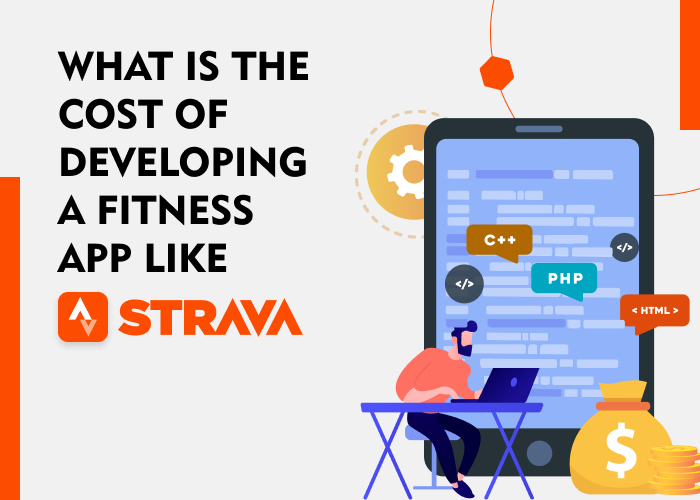What are the important features to add to a fitness app?
Apps like Strava need to have features that draw in and keep users. These are the essential characteristics that are essential to the usability and attractiveness of a fitness app.
GPS Tracking in Real-Time
For a fitness app to compete with other apps, real-time GPS tracking is necessary. With the use of this function, users may monitor their outside activities, such as cycling or jogging, with accuracy. The integration of this technology demands sophisticated mapping and location services, which drives up the development cost. Accurate GPS tracking improves the user experience by offering thorough activity logs.
Health Data Display
A contemporary fitness app must have heart rate tracking and health data integration. Including these functionalities in a fitness app, provides users with a comprehensive summary of their health indicators. This connection offers essential insights for individualized workout advice in addition to tracking progress.
Progress Tracking
Performance statistics and progress monitoring are essential for every digital platform-using fitness enthusiast. When you want to create an app similar to Strava, these features become even more important since they let users track their progress and establish reasonable objectives.
User Profile
Allow users to create personal profiles with details such as age, weight, fitness goals, and activity level. This information helps in tailoring workout plans and recommendations.
Customizable Workouts
Provide a variety of workout routines catering to different fitness levels, goals, and preferences. Allow users to customize their workouts based on duration, intensity, and targeted muscle groups. Include video demonstrations for exercises to ensure users maintain proper form and technique. This can be especially helpful for users who are new to certain workouts.
Social Integration
Enable social features such as the ability to share achievements, workouts, and progress on social media. This fosters a sense of community and encourages friendly competition among users. Furthermore, implement reminders for workout sessions, meal times, and hydration. Push notifications can help keep users engaged and on track with their fitness routines.
Offline Mode
Allow users to download workouts or content for offline use. This is especially beneficial for users who may not always have access to a stable internet connection. Additionally, integrate gamification elements such as badges, rewards, and levels to make the fitness journey more engaging and enjoyable.
Personal Trainer
Offer virtual coaching sessions or personalized guidance from certified trainers. This can provide users with expert advice and assistance, even if they are working out from home. Include features for health assessments to provide personalized workout and nutrition recommendations based on the user’s health status, fitness levels, and goals.
Nutrition Tracking
Include a feature for users to log their daily food intake and track nutritional information. This can help users maintain a balanced diet aligned with their fitness goals.
What is the cost of developing a fitness app like Strava?

This variation can be attributed to the app’s complexity, platform selection, distinctive design, and ongoing maintenance and update requirements. Furthermore, a key factor in determining the cost is the development team’s geographic location.
Conclusion
In conclusion, creating a fitness app requires careful consideration of the needs and preferences of fitness enthusiasts. Incorporating essential features not only enhances user engagement but also ensures the app’s effectiveness in promoting a healthy and active lifestyle.
A seamless user experience, robust tracking capabilities, social integration, and data analytics are paramount for success in the competitive fitness application market. By prioritizing user-centric design and continuously adapting to emerging trends, a fitness application can foster a supportive community and inspire users to achieve their health and fitness goals.
FAQs
What are the key features that a fitness application should have?
- Tracking capabilities for various activities (running, cycling, swimming, etc.)
- GPS integration for route mapping
- Social features for community engagement
- Personalized training plans
- Offline mode
How important is social integration in a fitness application?
What role does data analytics play in a fitness app?
How can a fitness application encourage user engagement?
Is it necessary for a fitness app to support various activities?
Ravi Bhojani is the Chief Marketing Officer (CMO) at Alian Software, where he spearheads the company’s marketing strategies and drives its brand presence in the competitive IT services landscape. With over a decade of experience in the technology and marketing sectors, Ravi has consistently demonstrated his ability to blend innovative marketing techniques with deep industry knowledge to deliver outstanding results.